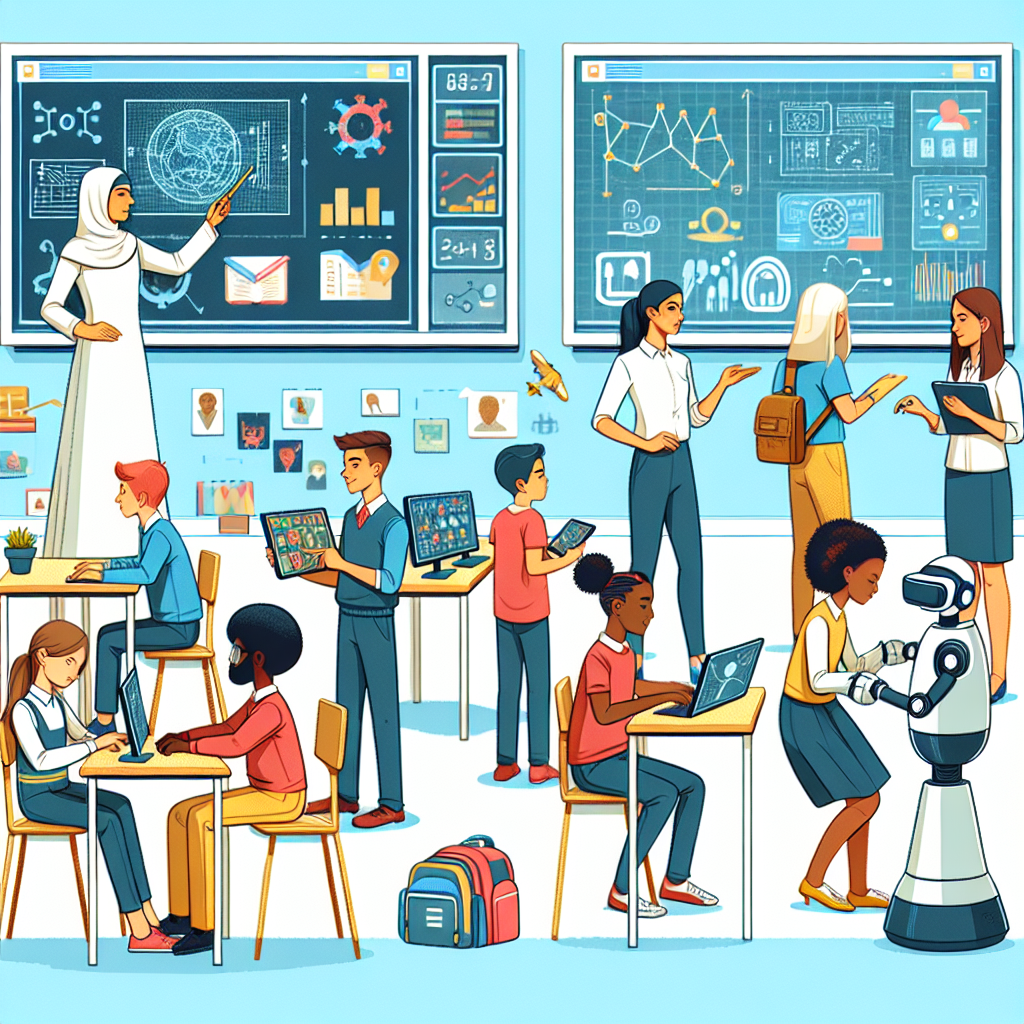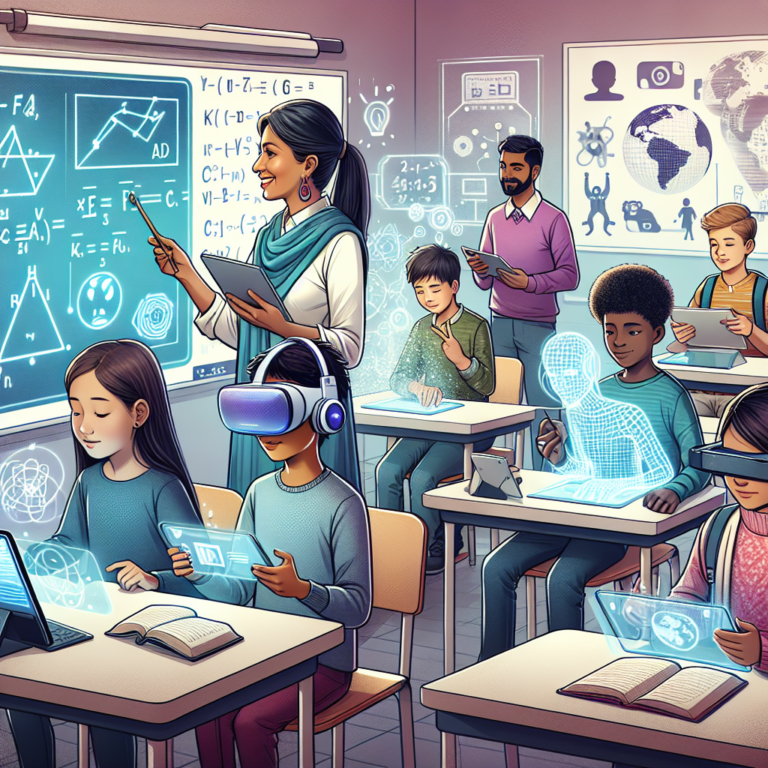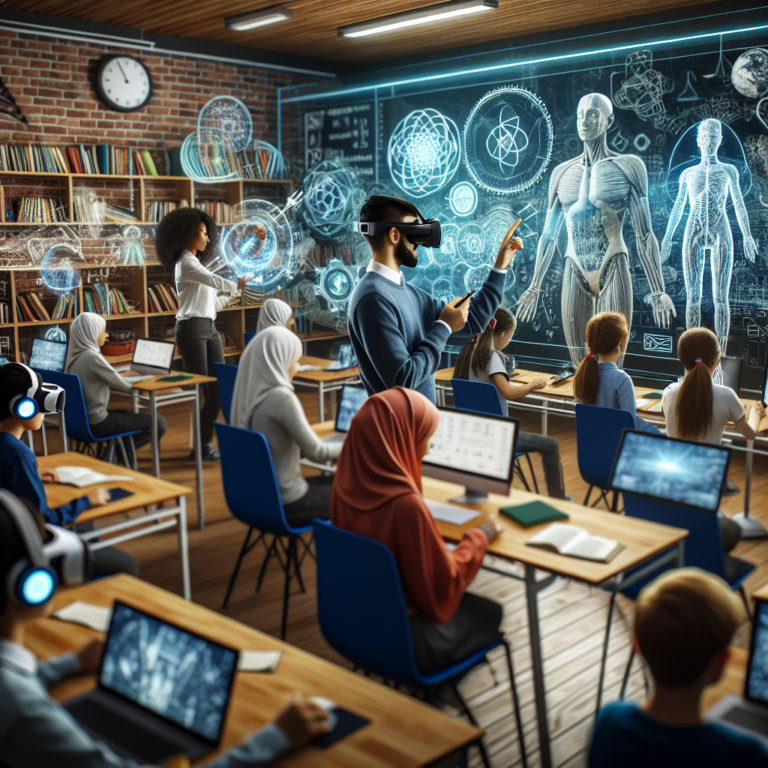How Educational Technology is Changing Education
In the digital age, technology has infiltrated every aspect of our lives—and education is no exception. From primary school classrooms to university lecture halls, educational technology advancements are reshaping the traditional learning environment. Tech innovations have created an array of digital resources that are transforming how teachers teach and students learn. In this article, we’ll explore the significant shifts educational technology is bringing to education and how they are enhancing the learning experience.
The Rise of EdTech
The term ‘EdTech’, short for educational technology, is rapidly becoming a buzzword in the realm of teaching and learning. It refers to the integration of IT tools into educational practices to create a more engaging, inclusive, and individualized learning experience. The rise of EdTech has been accelerated by the need to adapt to remote learning during global challenges, such as the COVID-19 pandemic, which forced educators and students to rely heavily on digital platforms.
Tech Innovations in the Classroom
From smart whiteboards to educational apps, tech innovations are making classrooms more interactive and engaging. These tools allow educators to present complex concepts in a more digestible format, catering to various learning styles. For instance, visual learners can benefit from interactive graphs and videos, while kinesthetic learners can engage with touchscreen activities that make learning more hands-on.
Personalized Learning Experiences
EdTech enables personalized learning paths that adapt to the pace and style of each individual learner. With adaptive learning software, students can receive customized exercises that cater to their level of understanding, ensuring no student is left behind. This individualized approach helps to identify students’ strengths and weaknesses, allowing educators to tailor their instruction accordingly.
Digital Resources for Better Learning Outcomes
The influx of digital resources is not only changing how information is delivered but also how it’s accessed and retained by students. From online libraries to educational games, these resources are providing students with an endless supply of information at their fingertips.
Access to a World of Information
Digital libraries and online databases give students access to a wealth of knowledge that extends beyond the walls of their classroom. This encourages self-directed learning, where students take the initiative to research and explore subjects they’re interested in, promoting lifelong learning habits.
Interactive and Gamified Learning
Educational games and simulations turn learning into an enjoyable experience. By gamifying lessons, students are more likely to engage with the material and retain information. This approach is especially effective for subjects that are traditionally seen as challenging or uninteresting.
Enhancing Collaboration with EdTech
Educational technology is not just about individual learning—it also fosters collaboration among students and between students and teachers. Tools like discussion forums, group projects, and peer review platforms encourage students to work together, share ideas, and provide feedback to one another.
Breaking Down Geographical Barriers
EdTech allows for collaboration across distances, connecting students from different schools, regions, or even countries. This global interaction exposes learners to diverse perspectives, preparing them for a connected world.
Real-time Feedback and Support
Digital platforms enable teachers to provide real-time feedback on assignments, which can be crucial for student development. With immediate responses, students can quickly understand where they need to improve and make adjustments accordingly.
The Role of Technology in Special Education
Tech innovations have also made a significant impact on special education, offering new ways to support students with different abilities.
Assistive Technologies
Assistive technologies, such as screen readers and speech-to-text programs, provide invaluable support for students with disabilities. These tools help level the playing field, allowing all students to access the curriculum and express their understanding in ways that work best for them.
Creating Inclusive Classrooms
With EdTech, educators can create more inclusive classrooms that cater to a wide range of learning needs. By incorporating technology that supports different learning abilities, teachers can ensure that each student has the opportunity to succeed.
The Challenge of Access and Equity
Despite the many benefits of educational technology, there remains the challenge of ensuring access and equity. Not all students have the same level of access to digital devices or the internet, which can widen the gap between different socio-economic groups.
Bridging the Digital Divide
Efforts to bridge the digital divide are crucial to ensure that all students can benefit from EdTech. This includes providing affordable devices, creating community internet access points, and offering training for students and educators to effectively use technology.
Preparing Students for a Digital Future
As the world becomes increasingly digital, education systems must prepare students for the future. This involves not only teaching digital literacy skills but also fostering critical thinking, creativity, and problem-solving—skills that are essential in the 21st century.
Integration of Coding and Computational Thinking
The integration of coding and computational thinking into the curriculum is becoming increasingly common. By understanding the basics of how technology works, students are better equipped to navigate a digital world and potentially pursue careers in the growing tech industry.
Developing Soft Skills for the Digital Age
In addition to technical skills, EdTech also supports the development of soft skills such as communication, collaboration, and adaptability. These are key competencies that employers look for and are essential for success in any field.
Conclusion
Educational technology is revolutionizing the way education is delivered and experienced. With tech innovations providing digital resources, personalized learning, and enhanced collaboration, the landscape of education is evolving to meet the demands of a digital world. While challenges like access and equity need to be addressed, the potential for EdTech to improve learning outcomes and prepare students for the future is immense. As we continue to embrace the changes brought about by educational technology, we can look forward to a more dynamic, inclusive, and effective education system.









